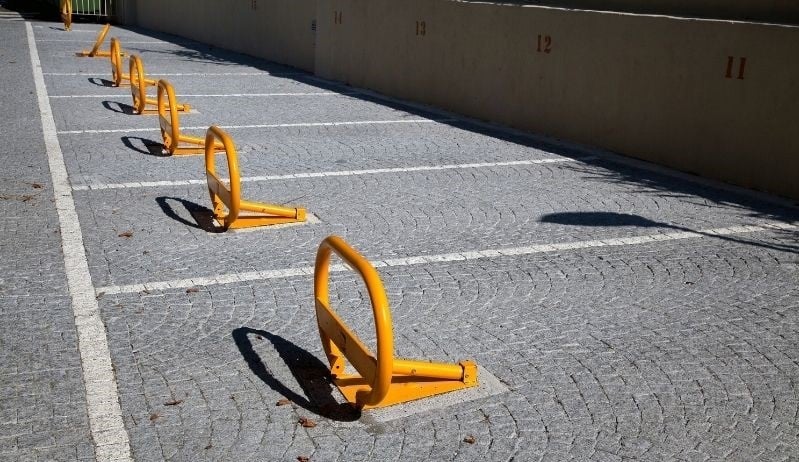
Parking bollards are essential safety and traffic management tools used in parking lots, driveways, commercial spaces, and public infrastructure. Whether they are designed to control vehicle access, protect pedestrians, or define boundaries, parking bollards offer a durable solution that blends both functionality and design. When choosing parking bollards, two popular materials often come into consideration: stainless steel and mild steel (M-S). Each offers distinct advantages depending on the project’s needs. This article explores the benefits of parking bollards, the differences between stainless steel and mild steel options, and how to choose the right material for your project.
What Are Parking Bollards?
Parking bollards are sturdy, vertical posts installed in parking areas to prevent vehicles from entering restricted zones, guide traffic, protect buildings or pedestrian areas, and enhance safety. These bollards come in a variety of materials, designs, and sizes depending on the intended application.
In addition to their protective function, parking bollards also serve as visual markers that define spaces and create a sense of order in both public and private areas. Modern bollards can be both fixed or retractable, offering flexibility for different settings.
Key Benefits of Parking Bollards
Vehicle and Pedestrian Protection
- Parking bollards provide an effective barrier between vehicles and pedestrians, protecting walkways, storefronts, and buildings from accidental damage.
Traffic Control
- Bollards help guide traffic flow in parking lots and driveways, ensuring vehicles move in an organized manner and reducing the risk of accidents.
Aesthetic Appeal
- In addition to their functional purposes, parking bollards are available in various designs and finishes, enhancing the appearance of parking areas and building exteriors.
Versatility
- Parking bollards can be used for a range of purposes, from protecting sensitive areas and guiding traffic to providing security for high-traffic commercial areas.
Cost-Effective Safety Solution
- Installing bollards is an affordable and long-term solution for protecting property and people, reducing the risk of costly repairs or injuries.
Stainless Steel Parking Bollards
Stainless steel bollards are popular for their modern look, corrosion resistance, and durability. They are an excellent choice for both indoor and outdoor use, particularly in areas where aesthetics and long-term performance are crucial.
Benefits of Stainless Steel Parking Bollards:
Corrosion Resistance
- Stainless steel bollards are highly resistant to rust and corrosion, making them ideal for outdoor environments exposed to weather, moisture, and chemicals.
Durability
- Stainless steel is a robust material that can withstand heavy impacts and high traffic areas, offering long-lasting protection without the need for frequent maintenance.
Sleek Appearance
- The polished, reflective surface of stainless steel bollards provides a modern, professional appearance, making them a preferred choice for upscale commercial properties, shopping centers, and public spaces.
Low Maintenance
- Stainless steel requires minimal maintenance, needing only occasional cleaning to maintain its shine and corrosion-resistant properties.
Environmentally Friendly
- Stainless steel is a recyclable material, making it a sustainable choice for environmentally conscious projects.
Ideal Applications for Stainless Steel Bollards:
- Commercial buildings
- Shopping malls
- Hotels and resorts
- Airports
- High-end retail stores
- Urban pedestrian areas
Mild Steel (M-S) Parking Bollards
Mild steel (M-S) bollards are a more cost-effective option compared to stainless steel, offering strength and functionality at a lower price point. They are often used in areas where aesthetics are less critical, but strength and protection are necessary.
Benefits of Mild Steel Parking Bollards:
Affordability
- Mild steel is more affordable than stainless steel, making it an attractive option for projects with tight budgets that still require strong protection.
High Strength
- Mild steel bollards are strong and can withstand significant impact, making them ideal for applications where vehicle protection is a priority.
Customizability
- Mild steel bollards can be easily painted or coated to match the surrounding environment or enhance their corrosion resistance, providing both protection and visual flexibility.
Wide Range of Applications
- Mild steel bollards can be used in various applications, from industrial facilities to parking lots, warehouses, and urban traffic control.
Impact Resistance
- Mild steel bollards offer excellent impact resistance, making them suitable for areas where bollards are needed to protect against vehicle collisions or accidental impacts.
Ideal Applications for Mild Steel Bollards:
- Industrial facilities
- Parking lots
- Warehouses
- Public parks
- Schools and universities
- Municipal buildings
Key Differences Between Stainless Steel and Mild Steel Bollards
Durability and Corrosion Resistance
- Stainless steel is far more resistant to corrosion and rust compared to mild steel. This makes stainless steel the preferred choice for environments exposed to moisture, rain, snow, or chemicals. Mild steel, while durable, will need a protective coating or regular maintenance to prevent rust.
Aesthetics
- Stainless steel offers a sleek, polished appearance that is suitable for commercial and high-end applications. Mild steel, on the other hand, is more functional in appearance and is often coated or painted for aesthetic purposes.
Cost
- Mild steel bollards are generally less expensive than stainless steel. For projects that require a large number of bollards but have limited budgets, mild steel is a more economical choice.
Maintenance
- Stainless steel bollards require minimal maintenance and are easier to clean, while mild steel bollards may need regular repainting or coating to maintain their appearance and prevent corrosion.
Weight and Strength
- Both materials are strong and durable, but mild steel can be heavier and stronger in certain applications, especially when thicker gauges are used.
How to Choose the Right Parking Bollard for Your Project
Determine the Environment
- For outdoor applications or areas exposed to harsh weather, stainless steel is often the better choice due to its superior corrosion resistance. For indoor or budget-conscious projects, mild steel may be sufficient.
Consider Aesthetic Requirements
- If the appearance of the bollard is important to the project’s overall design, stainless steel offers a sleek and modern look. If aesthetics are secondary, mild steel with a protective coating can be used.
Assess the Required Durability
- Both stainless steel and mild steel bollards are strong and durable, but stainless steel requires less maintenance and is more resistant to rust over time. Mild steel bollards may need periodic maintenance to prevent corrosion.
Evaluate Budget Constraints
- For high-end projects where long-term durability and aesthetics are critical, stainless steel is worth the investment. For projects with tight budgets that still require strong protection, mild steel is a practical and affordable option.

